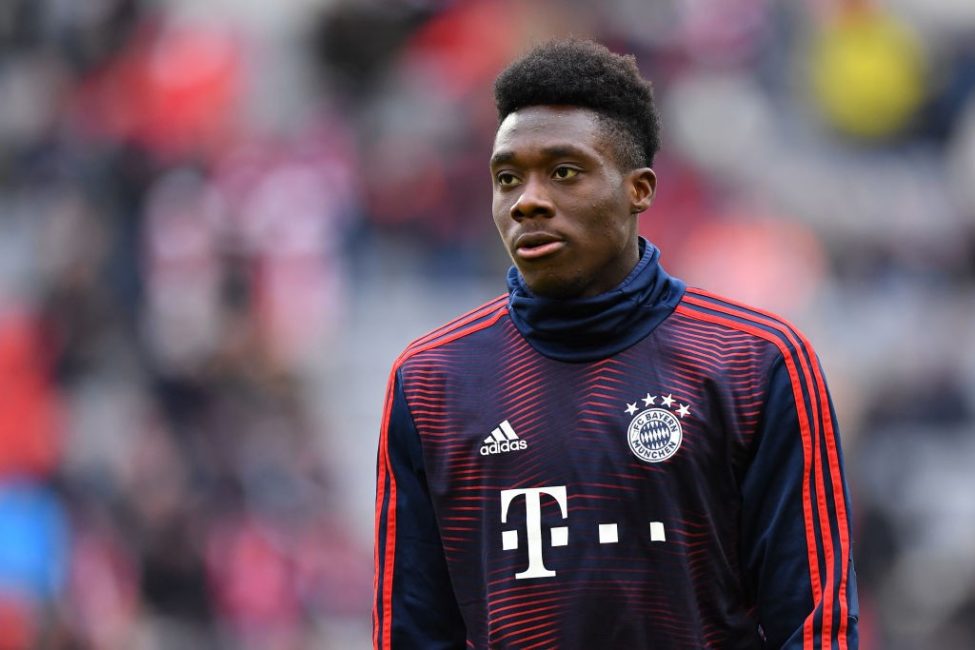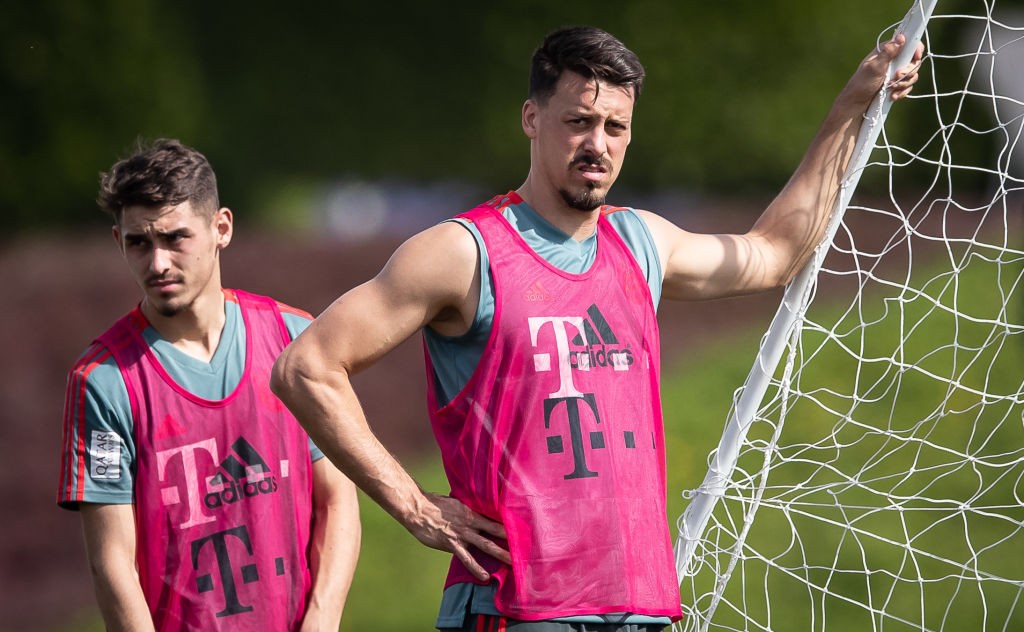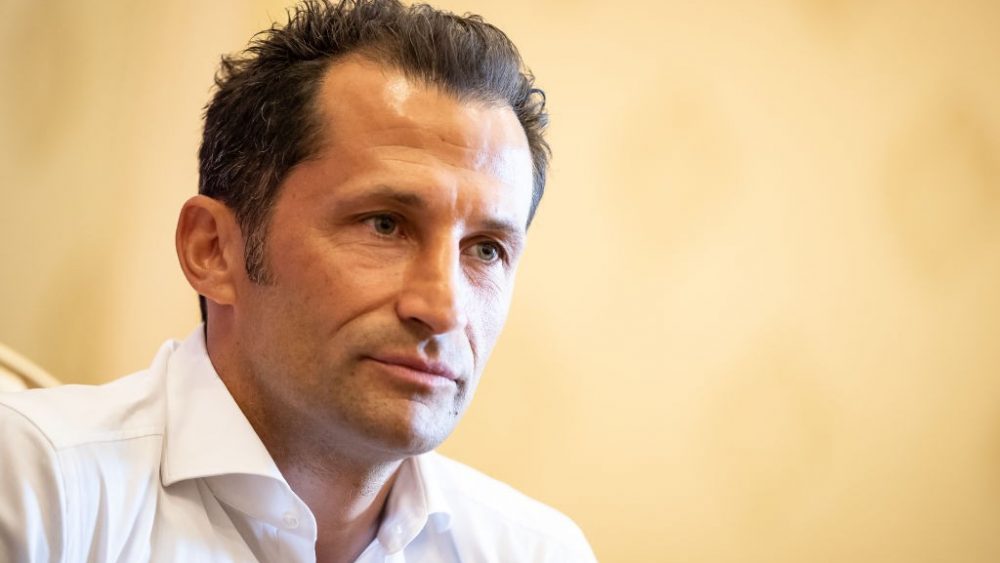FC Bayern’s January transfer window
“We want to sign the player. I’m completely convinced of his ability. We’re in conversation with Chelsea,” said Hasan Salihamidžić mid-January. But that wasn’t going to be his only coup.
He implied other transfers and spoke of a good mix of talented and experienced players which needed to be found. However, in the case of Lucas Hernández, he announced early on that a transfer in January was unrealistic.
Profile raising?
In the end, FC Bayern are left relatively empty-handed. Yes, Alphonso Davies did strengthen the squad. But the sporting director’s efforts in winter remained unrewarded.
The outspoken way in which the 42-year-old spoke out was, however, a slight surprise. While he held back, almost hid, especially in times of sporting failure, he now seemed to want to give away a water-level report every day.
Karl-Heinz Rummenigge and Uli Hoeneß also supported this public procedure by not only keeping out of the affairs – in the media at least – but also constantly stating that this route via the media was necessary. Many speculated that this was a way of trying to raise the sporting director’s profile.
A small defeat for Salihamidžić
But did it work? Not really. Because now Salihamidžić isn’t in a good light once again. Hudson-Odoi had to remain at his club, with even a summer transfer in question now. That can always happen. If the selling club holds firm, even the best sporting director will struggle to make things happen.

(Image: Sebastian Widmann/Bongarts/Getty Images)
Salihamidžić, though, put himself under pressure needlessly with his positive and optimistic statements. Beyond the fact that that behaviour certainly wouldn’t have reduced the price, he also made sure that Chelsea became even more resolute and accused Bayern of a lack of respect.
On the other hand, there was the legitimate objection from Rummenigge that the player needed a signal. Salihamidžić wanted to show that the interest was more than tentative. And yet the plan backfired. In the end, it’s at the least a small defeat for the former Bayern player.
Learning from mistakes?
In spite of that: it shouldn’t be described as a catastrophe or a drama. As many justified points of criticism there are in the Salihamidžić case, he should also be granted a learning curve. He is, after all, new to the business. Also aware of that are Rummenigge and Hoeneß, who are already working on the club’s future in the background.
The justified question, though, is whether a misjudgement was made regarding the potential of the still-inexperienced Bosnian. Can Salihamidžić really learn so quickly from his mistakes that he’ll do Bayern’s demands justice in the near future?
The January window was a first taste of what Bayern expect. The deal with Pavard was, at least, agreed for the summer. To Salihamidžić’s credit, that shouldn’t be swept under the carpet.
The thinning-out of the squad requires differentiation
And yet Bayern’s transfer policy isn’t quite transparent. For years steps were taken in pursuit of a deep squad which could fill each position twice with almost the same quality. Shortly before the beginning of the season, the Rekordmeister sold Sebastian Rudy and Juan Bernat without replacing them – two players who could certainly have been valuable as back-ups for a playmaker in defensive midfield and for the left or right full-back positions.
Shortly before the end of the January window, Sandro Wagner then went too. Sole arrival: Alphonso Davies, where it’s still not quite clear to what extent he can already strengthen the side.
In the face of the aging and injury-prone squad, that is at the very least brave, if not downright negligent. This is less a criticism of the fact that these players left the club, more that they weren’t replaced. And even so, it’s important to differentiate.
Is the Wagner sale sensible?
Wagner, for example, was no longer able to offer any additional value on the pitch under Kovač. He himself seemed unsatisfied with the situation and the coach saw no use for him. The transfer, then, was logical. But could a replacement here have made sense?

(Image: Lars Baron/Bongarts/Getty Images)
It’s a fact that a drop in performance without Lewandowski can’t be chalked up to a lack in back-up. If the Pole is missing, FC Bayern are simply weaker. There is probably no other player in the world of his kind who would sit on the bench in most of the games of the season. The 2012/13 season with Mario Gómez, Claudio Pizarro and Mario Mandžukić is often given as a counter-argument here. But you also have to classify things realistically and say that that was an exceptional situation which was only possible with special characters like Mario Gómez. Most of the other players of that kind would have kicked up a fuss.
One can still doubt whether Wagner, in the case of Lewandowski being out, would really make a big difference compared to Thomas Müller or Serge Gnabry. Those two might even be more valuable for the team – to the extent that the coach can then also manage the corresponding adjustment of the attacking concept. In any case, the club’s decision was correct. Why keep a player who on the one hand barely made an appearance on the pitch and on the other hand had made clear his wish for a move?
In the third year of transition, finally the conclusion?
It was, however, really surprising that Salihamidžić didn’t unveil a full-back. With the departures of Rudy and Bernat, things came to an extreme situation there. Rafinha, Kimmich and Alaba – that’s too little, as we saw recently with the 1-1 against Augsburg. Goretzka is not an adequate replacement there.
The fact that Lucas Hernández, who might arrive in the summer, wasn’t available or was too expensive in January, can’t be used to reproach Salihamidžić. The same goes for Benjamin Pavard. And now? Now FC Bayern must pray that their key players stay fit. Like 2016/17 and 2017/18 before, 2018/19 is also an obvious transition season. With that legitimate argument, the generally meagre proceeds from the January window appear in a different light. It would only become a drama if the summer ends similarly.
Whether Salihamidžić can actually gain in profile, then, can not be evaluated on the back of a strange transfer window in the winter break. We can make evaluations next summer. Then for FC Bayern it’s down to making sure that there is finally an end after a third transition year. Maybe then there’ll be some mix of experienced and young players who can start a new era at FC Bayern Munich. Not only the club will hope for that but also the sporting director, who is currently tackling many issues at once without being able to sell these action well.





